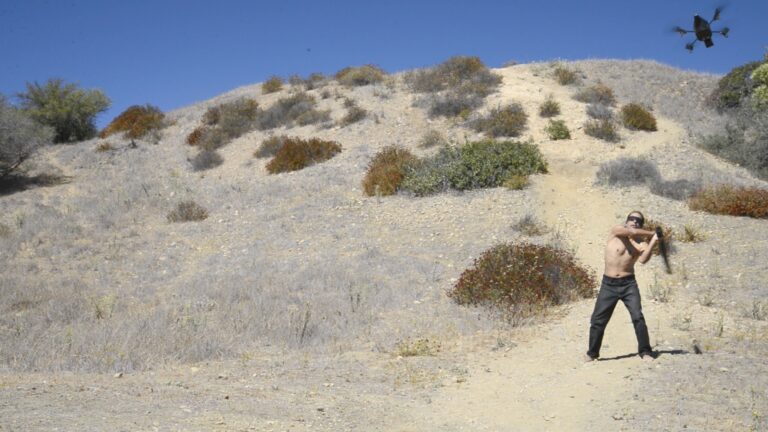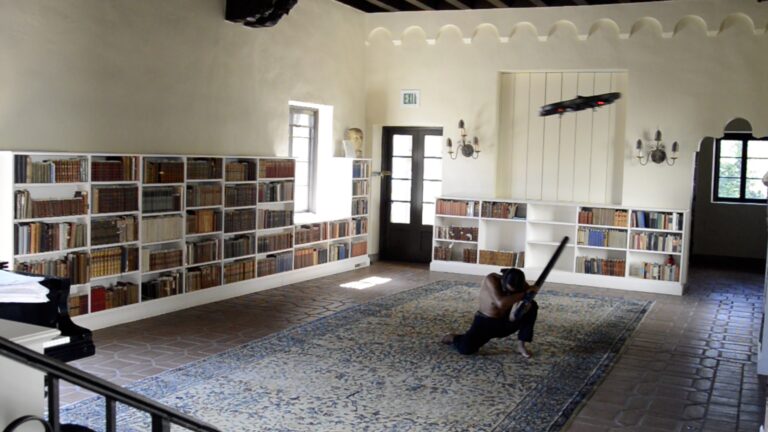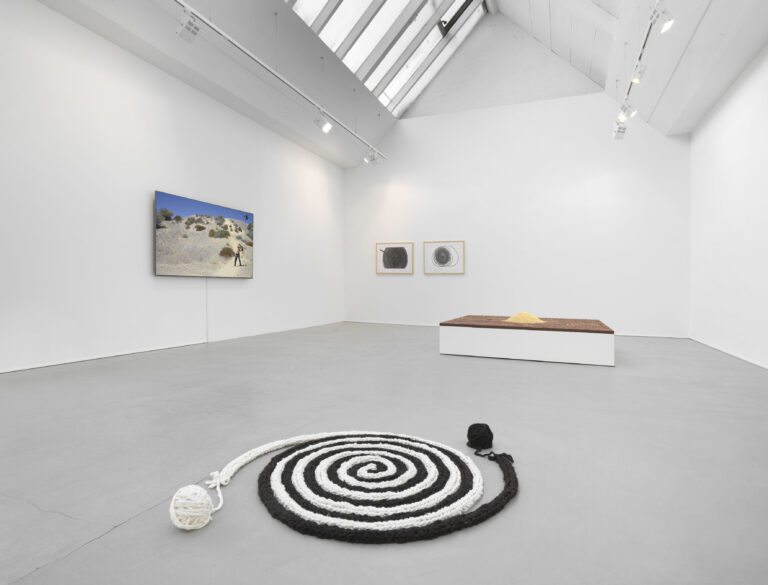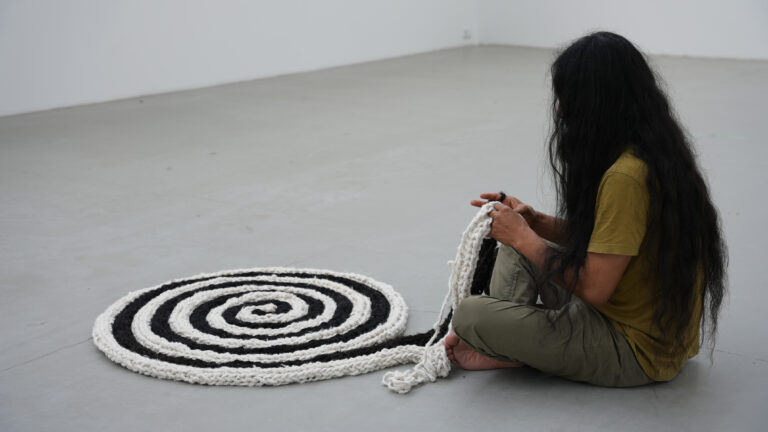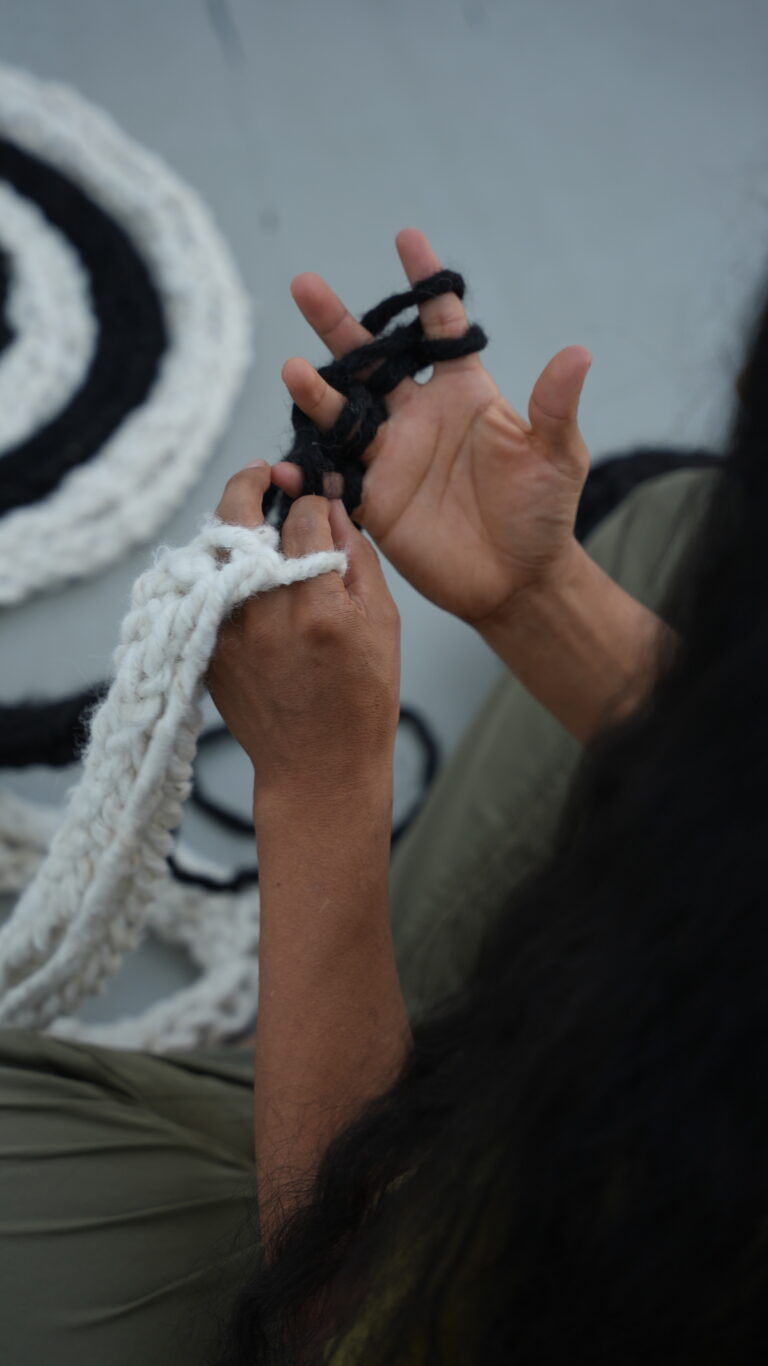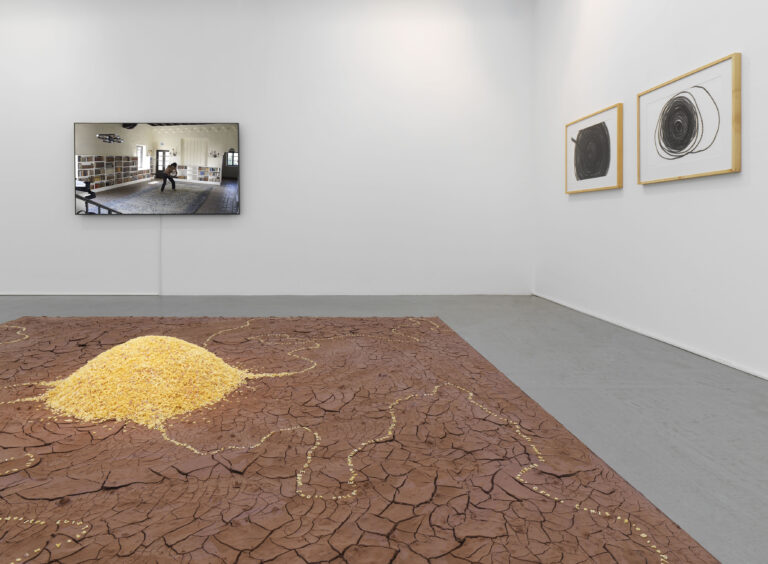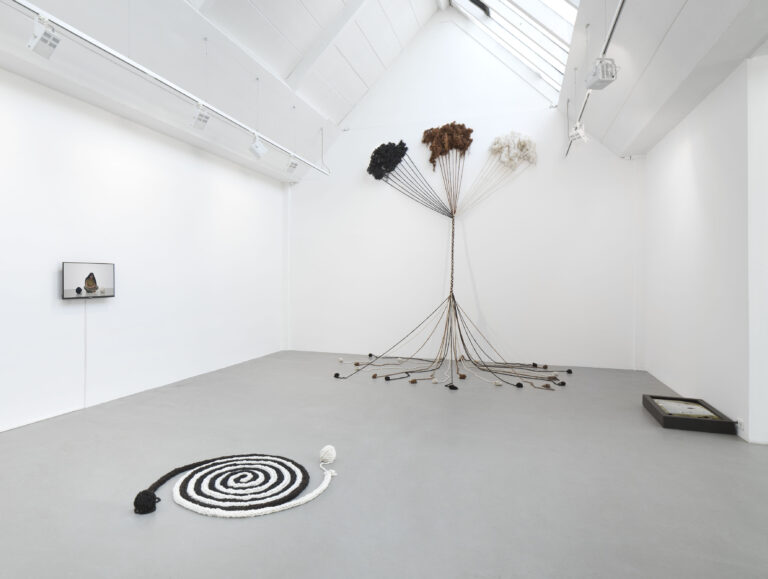Antonio Paucar
Weaving Silenced Voices Together/
Upaallachishqa Limaykunakta Awaśhtin Utuśhtin
Antonio Paucar’s recent body of work, created during his residencies in different continents, builds bridges between diverse geographies and cultural traditions: those of the West, the Andes and the Peruvian Amazon, both times past and future. His work addresses contemporary conflicts, such as the murder of indigenous leaders and environmentalists, climate change and surveillance technology, current wars and totalitarian regimes. Some of his pieces evince his research into ancestral Andean textile art and its materiality, in relation to the body and textilemaking. In the gallery, Antonio’s hands weave a spiral with white and black Alpaca fibers, an allusion to the principle of dual reciprocity in Andean worldview. The spiral symbolizes Andean thinking—inclusive, collective, linking reflection and action, and the past and the present as a cycle—in contrast to the linear Western conceptualisation, with its unidirectional notion of time. All action is offered as a meditative practice, creating energy, being in communion with the All, with nature, with Pacha Mama (Mother Earth). In fact, all of his exhibition constitutes a healing ritual for a world increasingly troubled by structural violence and a diminishing regard for the value of life. Thus his piece titled Illapa (a Quechua word for thunder and lightning) shows cosmic clouds that emit energy like luminous threads, made of Alpaca fibers dyed with natural colors on the verge of extinction, due to the demands of the market. Fibers are spun and plaited to become a sacred geometry that references the relationship to nature in the Andes, where work implies a co-creation with the deities that allow for the reproduction of life. The lightning is in charge of the ideal climate for sowing and harvesting, which is why it is invoked, to this day, by Andean communities affected by the unseasonal drought and rain brought about by climate change.
Between overflowing or polluted rivers, deforestation and territories under threat by the extraction industry, the drug trade and land trafficking, indigenous leaders and environmentalists risk their lives to defend communities, today more than ever under threat. In Their Names form Rivers and Mountains, the artist pays homage—writing with (pasta) letters used for cooking—to those who put their bodies in front of contemporary death machines. Clay complements this installation that underlines the lost lives that tend to go unnoticed in Peru, where indigenous lives are worth less than those of the elite that inherited the colonial power.
In the video performance Feuchtwanger’s Dream, Antonio, blindfolded, tries to strike down an encircling drone in a kind of dance, struggle and sensory exercise, both at the house in which Feuchtwanger lived his exile, in Los Angeles, and in the natural environment of Topanga State Park. This playful action evokes the traditional piñatas of children’s [birthday] parties in Latin America, revealing the vulnerability of humans in the face of contemporary forms of surveillance and espionage. In the video Learning to Fly in Varanasi’s Skies, we see kites crafted with discarded black plastic, abundant in urban garbage dumps. Kids learn how to fly their kites from rooftops, moving rhythmically in India’s most ancient and spiritual city, home to the Ganges river. In Journey on a Flying Carpet, Antonio sucks [red] wine through transparent straws, transforming the white surface [of the ground beneath him] into a fluid geometry of red lines that surround him almost magically.

Antonio Paucar, Learning to Fly in Varanasi’s Sky, 2012 / 2023, two-channel video, 02:52 Min, Courtesy Galerie Barbara Thumm
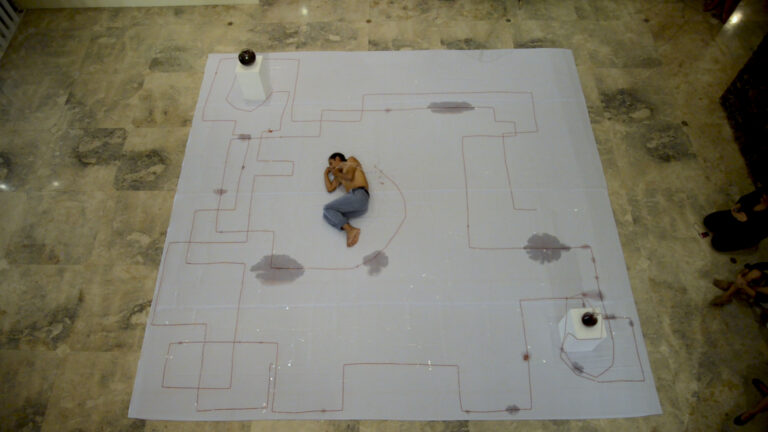
Antonio Paucar, Viaje en una alfombra alada, 2015 / 2023, Video, 06:50 Min, Courtesy Galerie Barbara Thumm
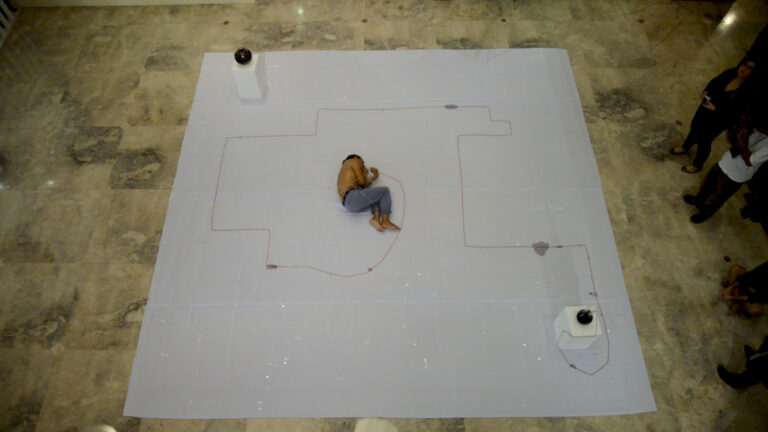
Antonio Paucar, Viaje en una alfombra alada, 2015 / 2023, Video, 06:50 Min, Courtesy Galerie Barbara Thumm
Lungs that draw, hands that cause extensions of their own bodies to fly, weavings that extend hands, arms defending themselves from external control and invasion, legs that are rooted in the earth, holding it up. To Antonio, the body is a universe rife with endless possibilities for creation, struggle and freedom. His works are a cure for a civilization slowly commiting suicide, crafted with poetry, the memory of silenced voices, and the reliance on a sensory knowledge that translates wishes and dreams into possible worlds. His oeuvre is an invitation to remember that when we can’t sleep, we should count not just just the white sheep, but also those that are black, brown and of varied colors. As he writes in a poem: let’s count sheep, llamas and alpacas… Vicuñas, cows, birds, trees, stones and more… For if we dream differently, we may be able to change the world and ourselves.
Text by Eliana Otta

